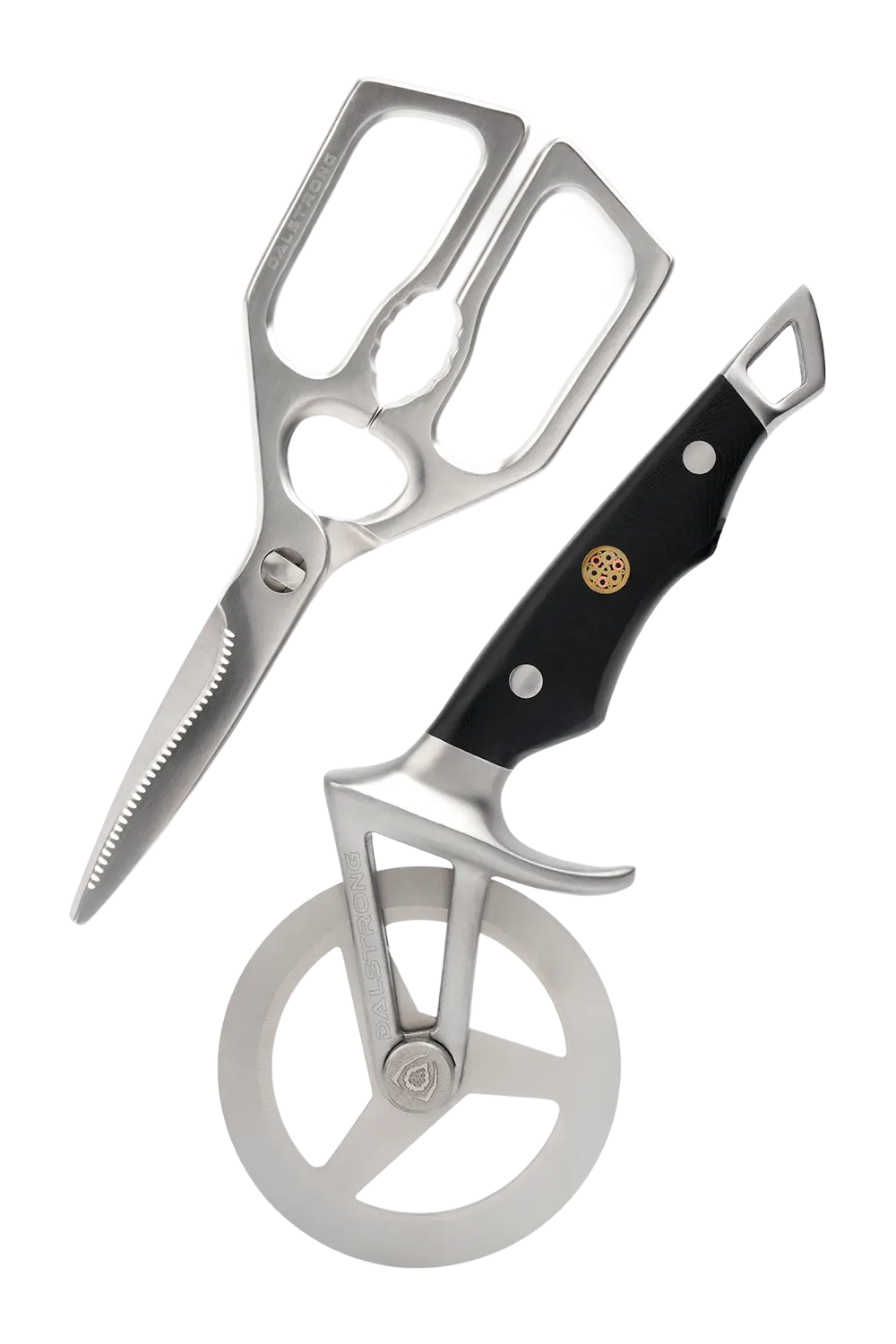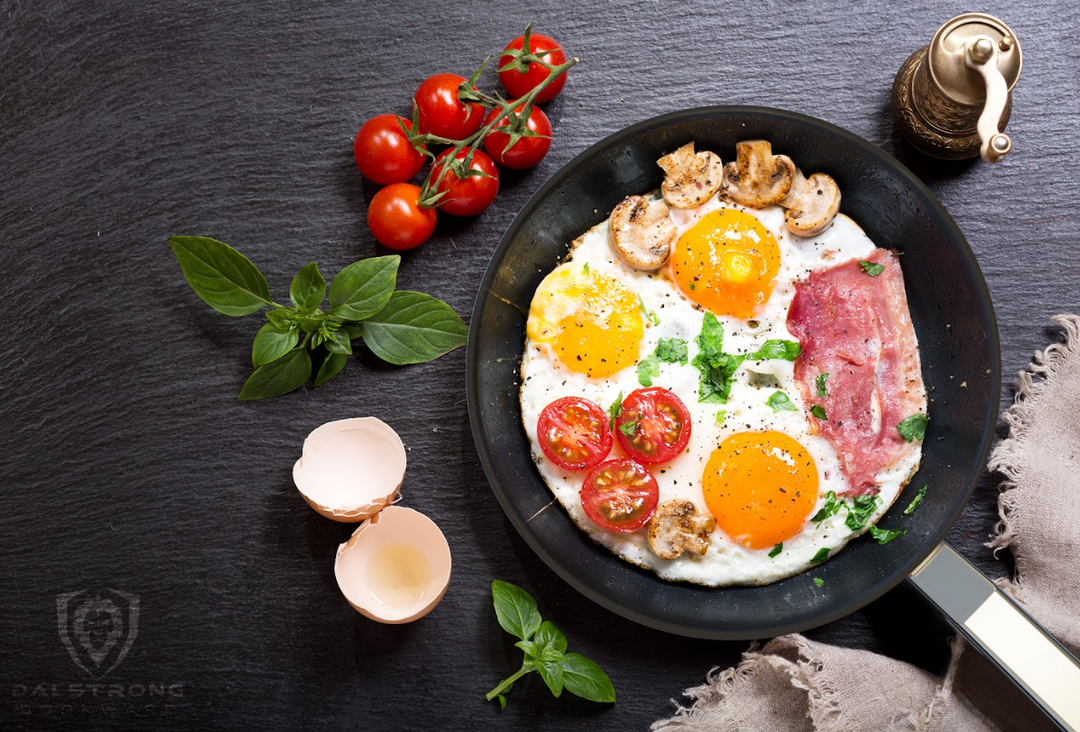What is a Fish Spatula?

What is a fish spatula?
What is a fish spatula? Is that even a thing? Oh, it’s a thing. You may be familiarized with its close relative: the regular spatula. But as you will find out in this post; they’re far from being the same.
There are different methods for cooking fish, but fish on the stovetop is my favorite, either for grilling or just to sear before baking. That brown crust is so flavorful, not to mention the slightly crunchy exterior that adds up to the experience.
A fish spatula will change the way you enjoy fish. Read up to find out why you need this among your kitchen tools.
1. What Exactly Is A Fish Spatula?

A fish spatula (sometimes called a fish turner) is a thin, long spatula with a special shape and design to flip, move and slip under delicate foods like fish fillets.
I think it’s called a fish spatula or fish turner because fish is a great universal example of a tricky, delicate food; but it’s unfair to think this is the only possible application for this ingenious kitchen utensil.
You can use it for flipping pancakes, burgers, cookies (several at a time), fried eggs, or things that require you to flip them over with a clean, precise movement. It’s also perfect for foods that need a bit of oil-draining, for example when transferring from the pan to a serving plate or cooling rack.
What is the difference between a fish spatula and a normal spatula?
- A fish spatula is thinner and longer.
- It’s usually made of stainless steel.
- The edge is asymmetrical, at an angle, and sharp to easily slide under the fish.
- It has bigger holes to drain liquids.
- Unlike other spatulas, the handle is also shorter than the “head” or “flipper” (the part that’s actually in touch with food).
Do you need a slotted fish spatula?
Can you cook and enjoy fish without a fish spatula? Absolutely.
But wouldn’t you want to indulge in a special kitchen item that enhances the experience of preparing your favorite meal? A standard slotted spatula can tear apart the fish and ruin a perfect dinner. But hey, to each his own.
Let me put it like this. It’s unlikely you ruin your Sunday pancake because you used a slotted turner to flip them (quite the opposite, I dare say). But there is a real possibility to ruin your fancy and delicate fillets by using the wrong type of flipper.
So all in all, a fish spatula may be the only kitchen spatula you’ll ever need.
2. What To Look For When Shopping For A Fish Spatula

Shape
It’s the shape of a fish spatula that makes it different from other regular spatulas. So this is the first point to pay attention to.
A fish spatula should be slotted, and slots should be wide to allow liquid to drain. The blade is curved and there is a clear angle at the edge; at least angled enough to slide under delicate foods. The handle is usually shorter than the flipper.
Quality
Choose a fish spatula that has been built to last a long time and bear heavy use. This is not a purchase you want to make twice a year. Also, you will like the item so much that it’s likely you end up using it for everything; so it’s in your best interest to choose a high-quality fish spatula from the very beginning.
Weight
Lightweight enough to be highly maneuverable; but sturdy enough to support heavy pieces; again; you want a spatula that’s been carefully designed to meet these proportions.
Handle
A thick, sturdy (yet lightweight) handle is one of the best things about having a fish spatula. It makes you feel you’re in control when you handle food and perform challenging tasks like flipping pancakes (especially if you’re trying to impress someone…). This handle is also short and close to the flipper, again, for better control.
Material
There are different materials available in the market: stainless steel, plastic, silicone, nylon, wood.
However, a real fish spatula is made of stainless steel (at least the flipper). I know plastic spatulas may sound better for using on a nonstick surface; but the truth is plastic spatulas can’t be molded into what a fish spatula is supposed to be: thin and sharp.
A stainless steel fish spatula also offers better resistance.
The handle may also come in different materials, a wooden handle being the most common.
Strength and flexibility
The right stainless steel fish turner should offer a balance between strength and flexibility. The flipper should be flexible enough to slip gently under the food, especially because this is a movement you usually do at an angle, in order not to tear the flesh apart.
However, it can’t be too flexible. It should be strong enough to lift and hold heavier foods like a steak, for example.
Budget
As with most kitchen tools, metal fish spatulas come in a variety of prices. You want to find one that fits into your budget. Still, we have to say; you don’t want to sacrifice quality for this one. So instead of looking for the cheapest one, go for the one that gives you more for a reasonable price.
3. The Best Fish Spatula
Professional Slotted Fish Spatula 7.5"
When it comes to preparing softer foods, where there is a real chance of them falling apart during cooking, the 7.5" professional slotted fish spatula offered by Dalstrong is the perfect kitchen tool.
Yes, you can flip and serve a whole fillet of fish without breaking anything; but this multipurpose utensil is also perfect for other preparations like burgers, pancakes, sandwiches, and even omelets.
PROS:
- The five wide slots in the blade give it a lot of flexibility and allow oil or liquids to drain and avoid splashing.
- It has a well-balanced weight (super important in metal fish spatulas). Sturdy enough to lift heavier foods.
- Designed with an angled, semi-sharp front edge that makes it very versatile for holding, stirring, and flipping delicate foods.
- The G-10 fiberglass resin handle is thick and allows for excellent maneuverability.
- Luxurious design.
- Made from a single piece of premium stainless steel that will not corrode.
- Easy to clean.
- Excellent user reviews.
CONS:
- Probably not the ideal choice if you only have nonstick pans.
- The handle in slotted fish spatulas may be heavier than in other slotted spatulas, and this is not a feel everyone appreciates.
- You may find cheaper spatulas out there (although, we insist you don’t give up quality when buying a special item like this).
4. Cooking Fish? Sauté Pans Recommendations
When looking for the best pan for cooking fish, you have to watch out for good non-stick properties, high-quality materials, and of course; something that fits into your size and budget preferences.
12" Sauté Frying Pan - Avalon Series
Prepare fish conveniently and quickly with a proper sauté pan where it cooks evenly, stays in one piece, and maintains that juicy, crispy presentation we’re all looking for. To that end, this Dalstrong sauté frying pan is the best in its class.
Of course, this is not a “fish” pan. Enjoy preparing everything from tender omelets to the thickest steak; sautéing vegetables, browning, braising, stewing, frying… you name it! All with top performance and functionality.
PROS:
- 5-ply copper forged foundation provides unmatched thermal conductivity.
- Non-reactive stainless steel and premium aluminum allow more nutritional properties, flavor, and color.
- Made with non-toxic materials.
- Ergonomic handle for easy pouring.
- Dishwasher safe.
- Excellent value for the money. Other competing pans cost up to twice as much.
- It comes with a limited lifetime warranty because it's built to last a lifetime.
CONS:
- The lid is made of stainless steel, not transparent (Some like to see their food).
- It might feel heavy due to the 2.5 mm thick base.
12" Sauté Frying Pan - Oberon Series
Having a high-quality, all-terrain, beautiful pan with a limited lifetime warranty is like having a fairy godmother in the kitchen. That's why Dalstrong was inspired by Oberon, the Celtic king of the fairies, to name this almost-magic line of cookware.
From a fancy fillet to hash browns, you’ll succeed at your favorite recipes with this magnificent 12" pan.
PROS:
- 3-ply aluminum core plus thick layers of non-reactive stainless steel. provide perfect heat conductivity and extend the life of the pan.
- The 2.5 mm thickness guarantees the best results and prevents the pan from denting or warping under prolonged heat.
- The nylon and satin finish improves smoothness and resistance.
- Compatible with all cooktops or gas cooktops, oven, and grill up to 600º F.
- The extra-strong tempered glass lid allows you to supervise every detail.
- The perfectly angled handle allows for a comfortable and secure grip.
CONS:
- The metal handle can get hot.
- As this is not exactly “non-stick”, you need to take extra precautions to prevent food from sticking to the pan.
5. How to Prevent Fish From Sticking to a Pan

Nonstick cookware can be very practical for cooking fish. Especially if you’re using a high-quality sauté pan like 12" Sauté Frying Pan from the Avalon Series.
But if you’re using a stainless steel fish spatula (and you should) with one of the stainless steel pans recommended above; then there are a few tips and tricks you can apply to avoid your fillet sticking to the surface.
- If your fish has been in the refrigerator, take it out 10-15 minutes before cooking so it achieves room temperature.
- Your fish should be as dry as possible. Moisture is one of the reasons fish stick to the pan. You can use a paper towel.
- Salt and pepper can help with the sticking, so make sure to season well.
- The heat should be high enough at the time you place the delicate fish on the stovetop. By “high enough” I mean the temperature at which protein starts browning, which is about 320º F. Trick: throw a few drops of water in the pan, if they evaporate immediately, you’re good to go.
- You need to coat the pan with a small amount of fat or oil, enough to avoid sticking, but not more (if sautéing is your goal).
- Allow the fish to sear well on one side before you flip it. Try to lift it with your metal fish spatula, but don’t force it! if it’s not naturally releasing from the pan yet, give it another thirty seconds. Avoid scraping with your spatula.
- Flipping fish only once is a good rule to live by.
6. Frequently Asked Questions

If my fish spatula has a wooden handle, can I put it in the dishwasher?
A wood handle item like a knife or a spatula is not dishwasher-safe.
What is a wooden spatula good for?
You can use a wood handle spatula for stirring and mixing ingredients, but the best possible use for a wooden spatula is scraping the bottom of a pan or a wok (something you might not do with a stainless steel spatula, for example).
Are silicone spatulas good?
Silicone spatulas and silicone kitchen utensils are a good choice to use on a nonstick pan. Although in general, you should always prefer a metal spatula over silicone. Metal spatulas are versatile, long-lasting, and very resistant.
Can you use a fish spatula on cast iron?
Metal / stainless steel spatulas are the best choice to use on your cast iron pan or skillet.
Which recipes can I cook with a fish spatula?
From a grilled cheese sandwich to a gourmet pan-seared trout: you will find endless possibilities in the kitchen with your fish spatula. Take your favorite pancake recipes or burger recipes to a new level.
Shop Dalstrong Kitchen Essentials Today






























































































































































































































































































































